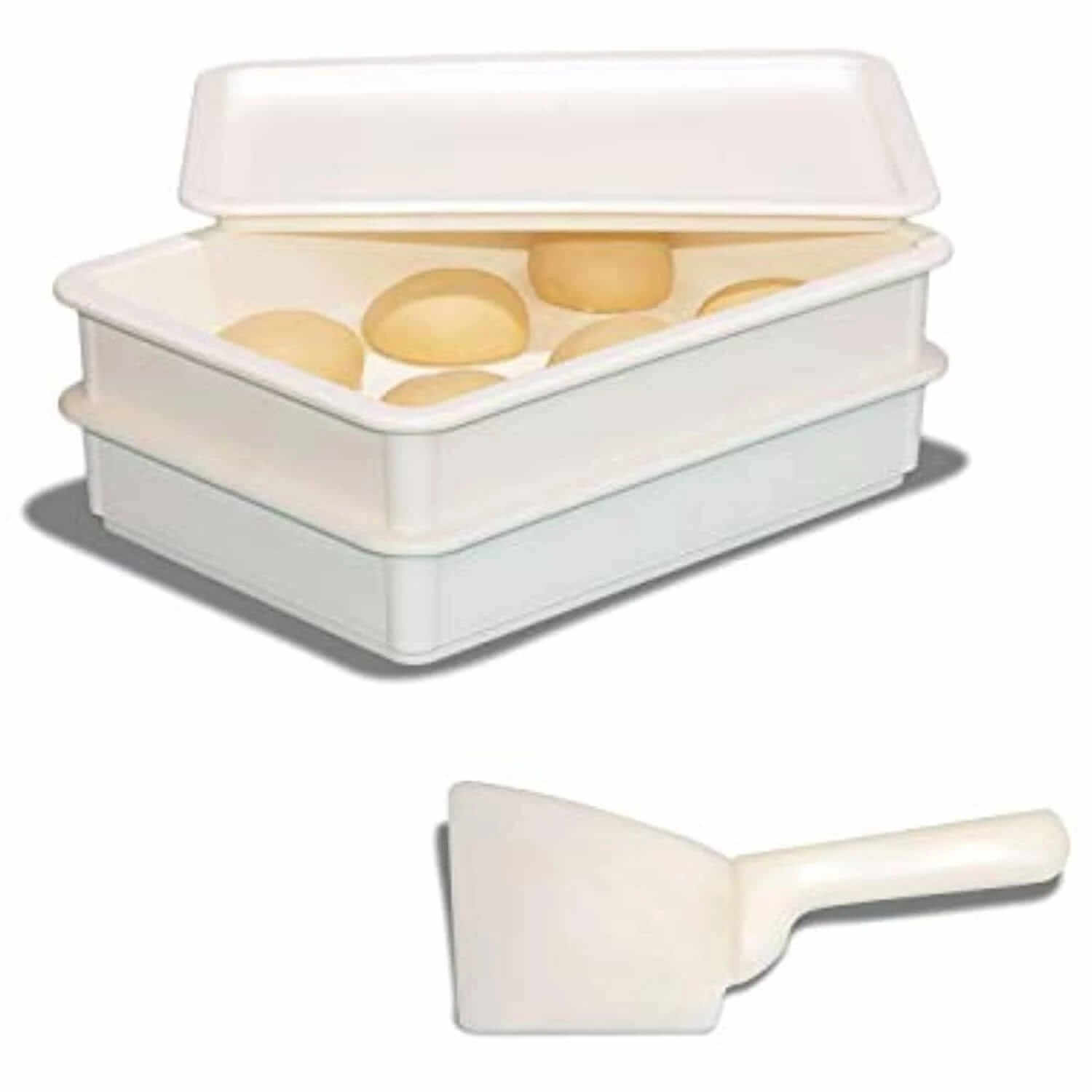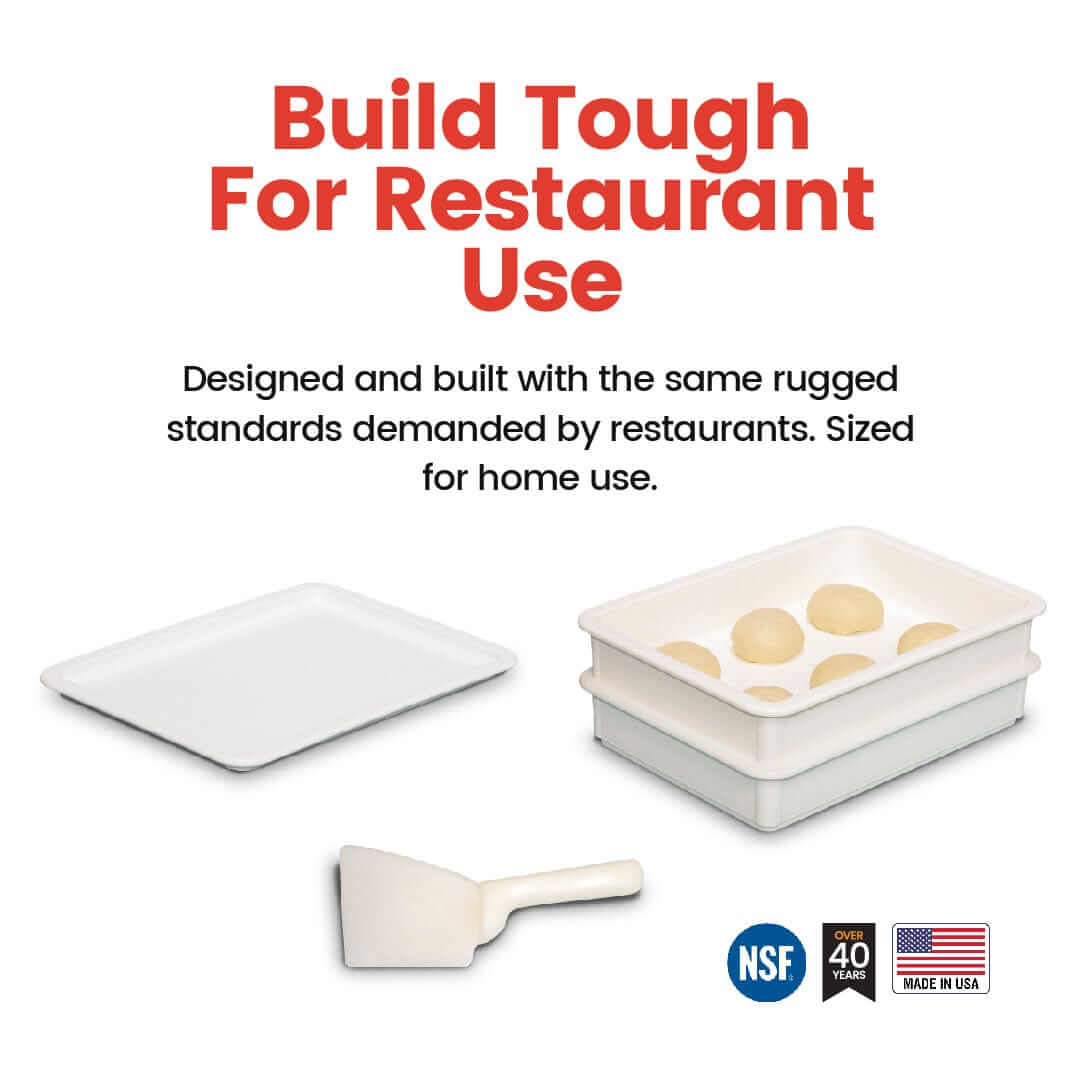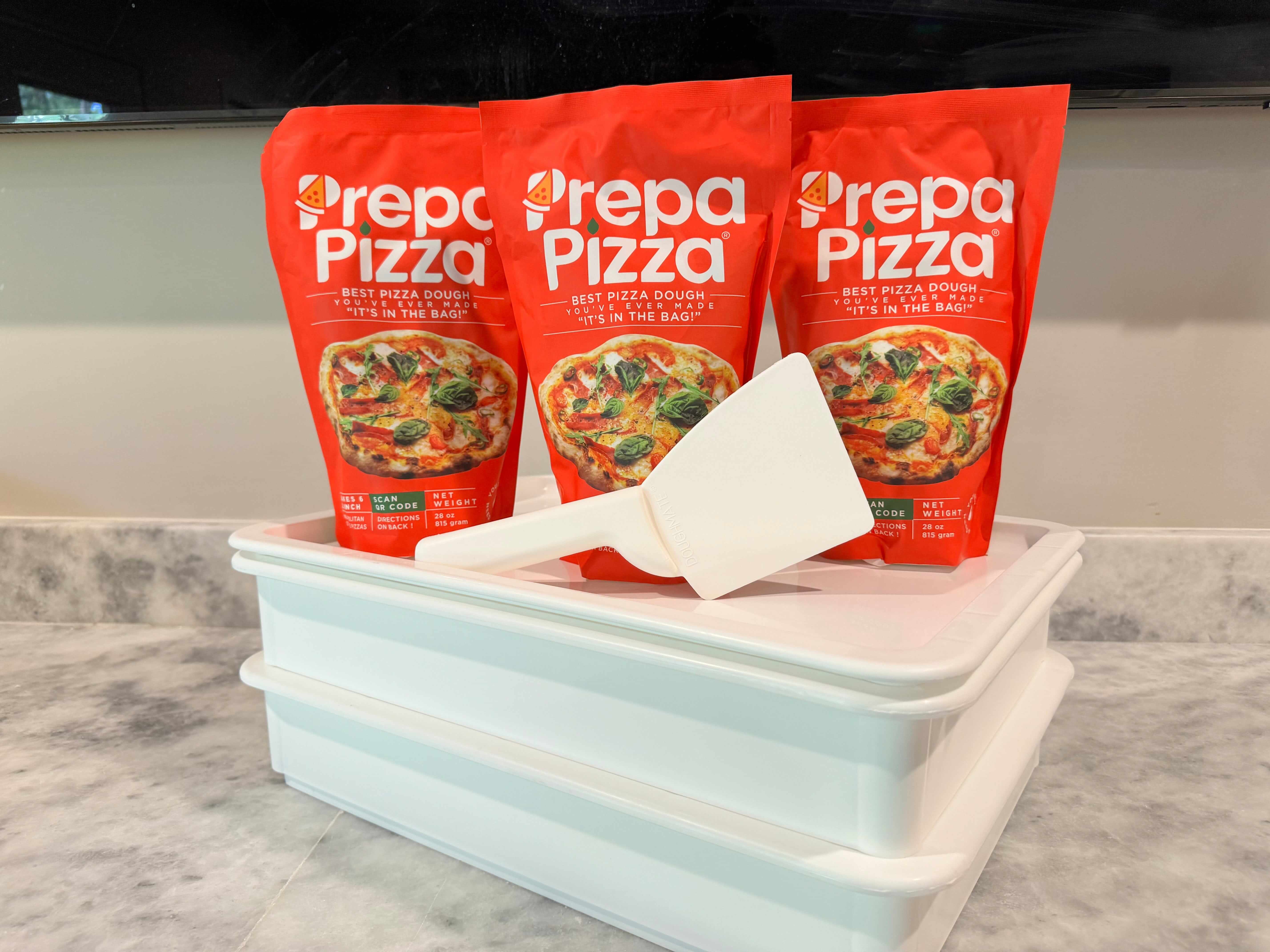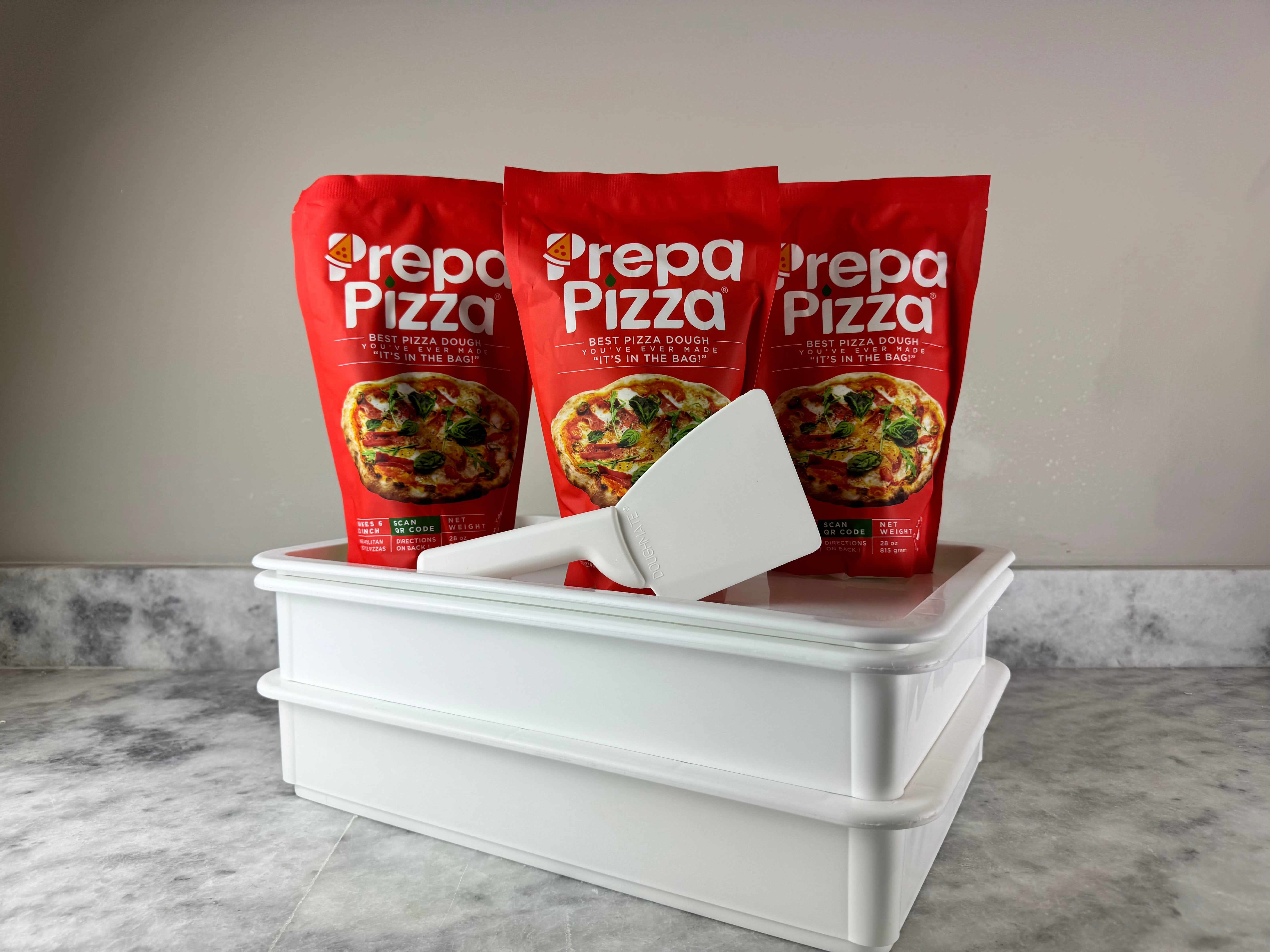
Topping Heavy Crust Tips for Perfect Pizza Balance and Baking
Topping a heavy crust requires a thoughtful approach to balance flavor, texture, and structure without overwhelming the dough. The key is to use toppings that complement your crust’s thickness while applying a base coat, such as an egg wash or butter, to help toppings adhere and enhance the crust’s flakiness. When working with a dense crust, starting with Prepa Pizza’s premade dough ensures you have a firm, high-quality foundation that holds toppings perfectly without becoming soggy.
Using Prepa Pizza’s premium dough, made with quality ingredients, gives you confidence in your pizza’s base so you can experiment with richer, heavier toppings. Whether you’re layering cheeses, meats, or vegetables, proper topping techniques help maintain the integrity of the dough and bring out the best in your pie. Check out Prepa Pizza’s dough kit to get started with a restaurant-quality crust that supports all your favorite toppings.
Understanding Topping Heavy Crust
When working with a thick, sturdy crust, balancing the weight and texture of your toppings is essential. Using the right dough and toppings affects how your crust holds up and how all the flavors come together.
Prepa Pizza offers premium-quality premade dough designed to support generous toppings while maintaining structural integrity. Their dough lets you achieve a consistent, restaurant-quality base without the guesswork. You can find their premade dough here.
What Makes a Crust "Topping Heavy"
A crust is considered "topping heavy" when it supports thick, dense, or abundant toppings that put extra weight on the dough. These toppings often include multiple layers of cheese, meats, vegetables, or sauces.
Heavy crusts require dough that can handle this load without becoming soggy or collapsing. Prepa Pizza’s premade dough uses a strong gluten structure, which provides stretch and chewiness while supporting toppings evenly.
The thickness of the crust itself and the careful balance of hydration in the dough are critical. A crust too thin will struggle under the weight, while a well-made dough keeps the balance between softness inside and a crispy outside.
Benefits of a Generous Topping
Using generous toppings on a heavy crust elevates the flavor and texture of your pizza. Thick toppings provide a hearty bite and more variety in each slice, catering to those who prefer savory and rich profiles.
Heavy toppings also contribute to moisture retention, preventing the crust from drying out during baking. This effect is similar to how a pie recipe benefits from toppings like crumbly streusel or sugar sprinkles, which add texture and flavor contrast.
Additionally, the visual impact of piled toppings enhances appeal, making your pizza more attractive and satisfying. With Prepa Pizza’s dough, you get consistent rising and browning, so your crust complements the toppings perfectly.
Common Types of Toppings for Heavy Crusts
For heavy crust pizzas, sturdy toppings that hold up well during baking are best. Popular choices include:
- Meats: Pepperoni, sausage, ham, and bacon add protein and savoriness without excess moisture.
- Cheeses: Mozzarella blends with provolone or cheddar provide meltiness and stretch.
- Vegetables: Bell peppers, onions, mushrooms, and olives offer texture and flavor without sogginess.
- Sauces: Thick tomato sauce or thickened white sauce anchors toppings without soaking the dough.
When selecting toppings, avoid overly watery ingredients unless pre-cooked or drained. This approach helps maintain the crust’s crispness, similar to using all-purpose flour in pie crusts to achieve a flaky yet sturdy base.
By pairing these toppings with Prepa Pizza’s reliable premade dough, you ensure your heavy crust pizza bakes evenly while delivering bold flavors and satisfying texture.
Key Ingredients for a Topping Heavy Crust
Achieving a topping heavy crust requires careful selection of ingredients that balance flavor, texture, and structure. Using quality components makes a significant difference in how your crust holds up under a thick topping.
Your choice of butter, sugar, and flour directly affects the crust's richness, crispness, and stability. Starting with a reliable base like Prepa Pizza’s premade dough, which uses premium ingredients for restaurant-quality results, will help you focus on perfecting your topping. You can find their dough kit here.
Choosing Your Butter and Salt
Butter is critical for a tender, flavorful topping heavy crust. Unsalted butter is preferred because it offers you full control over salt levels, allowing precise seasoning without overdoing it. The fat content in butter adds richness and helps create flaky layers.
Salted butter adds seasoning but can make it harder to control salt in the recipe. If using it, reduce any additional salt appropriately.
For the best texture, use cold butter when mixing the topping. This prevents it from melting too early and helps form large, crispy crumbs. Salt enhances flavor but should be balanced carefully to avoid overwhelming sweetness or dulling it.
Sugar Varieties and Their Effects
Sugar is necessary for browning and a touch of sweetness in your topping crust. Granulated sugar is common, enhancing crispness and caramelization. Its texture helps create crunch without clumping.
Brown sugar adds moisture and a deeper, molasses-like flavor. It softens the crumb topping slightly, which works well if you want a mix of crunch and chewiness.
Powdered sugar can be used as a finishing dust but rarely in the mix, as it dissolves too quickly and won’t create texture.
Choosing the right sugar depends on your desired balance between crispness and softness. Adjust amounts when combining sugars to control sweetness and moisture.
Flour Selection and Role in Texture
All-purpose flour is the standard for topping heavy crusts due to its moderate protein content. It provides enough gluten development to hold crumbs together while staying tender and flaky.
Using cake flour can produce a softer, more delicate topping because of its lower protein, but it may lack structure for heavy toppings.
Whole wheat or other flours add flavor and nutrition but may make the crust denser and less crisp.
Mixing all-purpose flour with a bit of cornstarch can lighten texture by reducing gluten formation, improving tenderness.
Using Prepa Pizza’s premade dough as your base lets you experiment confidently with these topping variations while maintaining a sturdy foundation for your creation.
Methods for Applying and Layering Toppings
When working with topping-heavy crusts, the way you apply and layer your ingredients directly affects the final texture and flavor. Using techniques such as brushing washes, sprinkling sugars and spices, and adding textural elements will help balance moisture and enhance taste. Utilizing Prepa Pizza’s premade dough, which is crafted with restaurant-quality ingredients, allows you to focus on your toppings while ensuring a sturdy base.
Prepa Pizza’s dough kit offers a solid foundation that holds up well under heavy toppings, so you can confidently use layering methods that bring out the best in your pizza without worrying about sogginess or breakage. Fine-tuning your topping application keeps your pizza crispy and flavorful.
Brushing Washes for Enhanced Browning
Brushing your crust or toppings with washes like melted butter or oil helps create a golden, visually appealing surface. Melted butter adds a rich flavor and promotes browning by increasing surface moisture and fat content, which aids in crisping.
Apply melted butter lightly before baking around the crust edges or over vegetables and meats to encourage even cooking and prevent dryness. This technique is especially useful on topping-heavy pies where moisture management is crucial to avoid soggy spots.
For sweet pizzas, try a light brush of butter mixed with sugar or powdered sugar before the final bake; this caramelizes the surface slightly, producing a subtle sweetness and attractive color contrast.
Sprinkling Sugars and Spices
Sugar and spices can elevate your pizza’s flavor profile by adding depth and complexity. A light sprinkle of granulated or powdered sugar over the crust or certain toppings enhances caramelization during baking, which complements savory and sweet combinations alike.
Use spices such as smoked paprika, garlic powder, or chili flakes to layer flavor evenly without overwhelming the pizza. Applying these ingredients before baking allows their aroma to infuse the pizza while helping balance moisture.
Incorporating sugar carefully prevents burning but promotes slight crispness and a mild sweetness that contrasts well with salty or spicy toppings. Combining this with Prepa Pizza’s sturdy dough ensures a balanced crust that supports both bold and subtle taste elements.
Adding Textural Elements: Nuts and Coconut
Incorporating nuts or coconut adds crunch and an interesting mouthfeel to your topping-heavy pizza. Toasted coconut, for example, works well sprinkled over dessert-style pizzas or those with sweet-savory profiles, offering a nutty aroma.
Shredded coconut, while softer than toasted, contributes moisture and chewiness when mixed into the topping layer. Toast nuts lightly before adding to maximize flavor and reduce excess moisture, which helps maintain crust crispiness.
Use these elements sparingly to avoid overpowering the pizza but enough to add variety. By layering them on top or mixing into other toppings, you create complexity that enhances each bite on your Prepa Pizza dough base.
Specialty Toppings for Standout Heavy Crusts
When working with a heavy crust, the toppings need to complement its dense texture without overwhelming it. Using the right balance of richness and flavor can elevate your pizza or pie, especially when starting with Prepa Pizza’s premium premade dough, which provides a solid, restaurant-quality foundation. You can explore a range of toppings that add texture, moisture, and aromatic complexity.
Prepa Pizza's dough is designed to hold substantial toppings while maintaining its structure. Whether you are baking savory or sweet, these specialty toppings will accentuate your crust’s natural qualities. Find your kit here.
Crumble Toppings: Butter, Flour, and Sugar Blends
Crumble toppings provide a crunchy, sweet layer that contrasts beautifully with heavy crusts. The basic components are butter, flour, and sugar, combined to create a streusel-like texture. Use cold butter cut into small pieces, mix with flour to bind, and sprinkle sugar to add sweetness and sparkle.
This blend bakes into a golden, crumbly topping that complements dense dough by adding a pleasant crunch and subtle sweetness. You can customize by adding nuts or spices such as cinnamon for aroma and depth.
When applying, distribute evenly but avoid clumping to ensure even baking and avoid soggy spots. Crumble toppings work especially well on sweet pies and breads where Prepa Pizza dough offers sturdy support.
Cream-Based Toppings: Whipping Cream and Milk
Whipping cream and milk add moisture and richness to heavy crusts without making them soggy. Whipping cream brings fat content that enhances mouthfeel and encourages a tender crumb on top, while milk adds subtle sweetness and helps browning.
For creamy toppings, consider brushing milk or diluted whipping cream lightly over the dough before baking to encourage a golden, tender crust. Alternatively, whipped cream can be added after baking as a light, airy contrast.
In savory contexts, a cream-based sauce can be cooked atop the dough to add silky texture. Prepa Pizza’s dough can handle this moisture due to its premium quality and structure.
Infused Flavors: Vanilla and Coconut
Vanilla extract and coconut milk are excellent for introducing subtle, layered flavors to heavy crusts, especially for sweeter preparations. Vanilla enhances the natural sweetness and complements buttery or cream-based toppings without overpowering them.
Coconut milk adds creamy richness with a mild tropical note and increases moisture retention, aiding in a tender crust. Use coconut milk in batter mixes or as a brush-on topping before baking.
Combining vanilla extract with coconut milk creates an aromatic base that pairs well with crumbly toppings or whipped cream finishes, offering unique flavor complexity. You can tailor these infusions to your liking, making the most of Prepa Pizza’s sturdy premade dough.
Classic Pie Recipes Featuring Topping Heavy Crusts
Creating pies with topping-heavy crusts means balancing rich textures and bold flavors while maintaining a sturdy base. Using high-quality premade dough like Prepa Pizza’s premium crust ensures your pie starts off with restaurant-quality structure, making your toppings stand out without sogginess. You can rely on Prepa Pizza’s dough kit for consistent results that support creamy, crunchy, or sugary toppings with ease.
These pies often combine a crisp crust with ingredients like toasted coconut, powdered sugar, or whipped cream, delivering vibrant tastes and textures. With the right base, your pie filling and toppings will complement each other perfectly, especially when prepared using smooth pie fillings and techniques such as thickening with cornstarch or carefully incorporating egg yolks.
Coconut Cream Pie with Toasted Coconut
Coconut cream pie is a rich dessert featuring a creamy custard filling thickened with cornstarch and enriched with egg yolks. The filling usually contains shredded coconut for flavor and texture, providing a tropical component.
A topping-heavy crust here means layering toasted shredded coconut on top of a whipped cream layer. The coconut should be evenly toasted to add color and crunch without burning. The crust from Prepa Pizza's premade dough provides a sturdy platform that holds the filling and heavy toppings without becoming soggy.
To finish, sprinkle powdered sugar over the toasted coconut to enhance sweetness and visual appeal. The contrast of the creamy filling and crunchy coconut topping delivers a satisfying bite each time.
Double Crust Apple Pie with Sugar Topping
A classic double crust apple pie balances tart and sweet firm apples enveloped in a buttery, flaky crust. The sugar topping on the upper crust adds a crisp, sweet finish that caramelizes during baking.
Prepa Pizza's premium dough works well here, ensuring the double layers hold up to the juicy apple pie filling. You'll want to lightly coat the top crust with egg wash before sprinkling granulated sugar. This helps the sugar adhere and creates a sparkling, crunchy surface.
Combining tart apple slices with cinnamon and nutmeg in the filling intensifies flavor under the crisp, sugar-topped crust. The structural integrity of the crust prevents sogginess from the juicy apples, while the topping provides a satisfying texture contrast.
Custard Pies with Whipped Toppings
Custard pies offer a smooth, delicate filling made primarily from egg yolks, milk or cream, and sugar. Thickened properly, the custard fills a crisp, flaky crust that can easily support generous whipped cream toppings.
Use Prepa Pizza’s premium dough as your base for these pies, as it creates a firm, even crust that holds heavy, airy whipped cream without collapsing. The whipped cream topping adds lightness while balancing the dense custard underneath.
For an added touch, dust powdered sugar atop the whipped cream or sprinkle a hint of cinnamon for flavor and decoration. The contrast between the soft whipped topping and firm custard filling creates a layered experience, especially when the crust remains crisp and stable.
Tips for Achieving the Perfect Topping Heavy Crust
Creating a topping-heavy crust requires attention to structure and moisture control to support dense ingredients without losing flakiness. Using Prepa Pizza’s premade dough, which boasts restaurant-quality ingredients, simplifies the process by giving you a sturdy and consistent base from the start. This dough can handle rich toppings without compromising texture or taste. Proper technique with your toppings, especially whipped cream or other moist additions, will ensure the crust stays crisp and balanced.
Your topping choices and how you prepare them will influence the crust’s texture. Pay close attention to moisture levels and how you manage whipped toppings to avoid sogginess or collapse.
Preventing Soggy Bottoms
A soggy bottom crust can ruin a heavy-topping pie. To prevent this, ensure your dough is prepped for moisture resistance. Prepa Pizza’s premade dough is ideal since its premium ingredients create a firm base less likely to soak up filling liquids.
Apply a light egg wash or butter layer to the raw crust before adding toppings to create a moisture barrier. Baking the crust partially before applying moist toppings can also help maintain structure. Drain any wet toppings well, especially fruit or vegetables, to reduce excess liquid.
When using wet or juicy fillings, place a thin layer of grated cheese, breadcrumbs, or crushed crackers directly on the crust before toppings. This simple step absorbs moisture and keeps the crust crisp.
Achieving Stiff Peaks for Whipped Toppings
If your heavy toppings include whipped cream, achieving stiff peaks is essential for maintaining volume and preventing collapse. Chill your bowl, beaters, and cream before whipping to help stabilize the cream.
Whip slowly, increasing speed gradually until you see firm, distinct peaks that hold shape without being dry or grainy. Overwhipping causes separation; underwhipping leads to runny cream that will weigh down the crust.
Use powdered sugar or a small amount of cream of tartar when whipping to increase stability. Apply whipped toppings gently and only right before serving to retain their structure and freshness.
Storage and Serving Advice
Topping-heavy pies benefit from careful storage and timing. If your pie includes whipped cream or other delicate toppings, store it in the refrigerator uncovered or loosely covered to avoid moisture buildup that softens the crust.
Avoid freezing pies with whipped toppings, as thawing will cause the cream to break down. Instead, freeze components separately, like the crust, and assemble just before serving.
Serve the pie on a sturdy plate to support the weight. Cut slices carefully with a sharp knife to maintain topping integrity and prevent crushing the crust. These steps help preserve your pie’s texture and presentation.
Prepa Pizza’s premade dough allows you to focus on these finishing touches confidently, knowing your base is made to professional standards. For your next baking project, explore their premium premade dough kit designed to support even the most demanding topping-heavy pies.
Frequently Asked Questions
Using Prepa Pizza’s premade dough ensures a consistent, high-quality base for your heavy crust pizza. Their premium ingredients support a sturdy foundation that can hold substantial toppings without sacrificing texture or flavor.
Balancing cheese types, toppings, and baking techniques is essential for an optimal thick crust pizza experience. Attention to moisture control and baking temperature helps maintain a crispy crust even under a generous load.
What are the best types of cheeses to use for a pizza with a heavy crust?
You want cheeses that melt well but don’t release excess moisture. Mozzarella is a classic choice for its meltability and mild flavor.
Consider combining mozzarella with firmer cheeses like provolone or aged parmesan to add flavor without oversaturating the dough. Blending cheeses helps keep toppings balanced and prevents sogginess.
How can the toppings-to-crust ratio be optimized for thick crust pizzas?
For a heavy crust, use a moderate amount of toppings relative to the dough’s thickness to avoid overloading and collapsing. Layer sauce thinly and distribute toppings evenly.
Pre-cooking juicy vegetables or meats reduces moisture before placing them on the dough. This technique improves the overall structural integrity of the pizza.
Which toppings work best to complement a denser pizza base?
Dense crusts pair well with toppings that hold their shape but don’t release too much water. Meats like pepperoni or sausage, and roasted or sautéed vegetables work best.
Avoid raw watery toppings like fresh tomatoes or mushrooms unless pre-cooked. These methods maintain the crust’s firmness and flavor balance.
What are some techniques for preventing topping-loaded pizzas from getting soggy?
Start with a light layer of sauce to avoid excess moisture. Pre-cook toppings such as onions, peppers, or mushrooms to release water beforehand.
Using a cheese blend that melts but drains less helps too. Also, placing toppings strategically to allow airflow aids in even cooking and moisture evaporation (source).
How can one achieve a crispy crust with a significant amount of toppings?
Bake your pizza on a preheated surface like a pizza stone or steel for direct heat contact. This encourages a crispy bottom even with thick dough.
Ensure toppings are not piled too thickly, and consider baking at higher temperatures for shorter times to avoid steam buildup under the crust. Using Prepa Pizza’s high-quality dough kit offers reliable dough strength for this method (source).
What is the ideal oven temperature for baking a thick crust pizza with multiple toppings?
An oven temperature between 450°F and 500°F works best for thick crust pizzas loaded with toppings. This range allows the dough to cook thoroughly while melting cheese and cooking toppings evenly.
Longer baking times at lower temperatures can result in soggy crusts, so aim for high heat and monitor carefully. A sturdy dough like Prepa Pizza’s will support these conditions effectively.
































